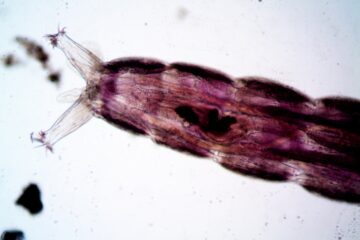![]()
Introduction
Forensic Science refers to the application of science and law in civil and criminal investigations. The analysis of physical evidence done by forensic scientists helps in solving the cases. Forensic biology and Forensic osteology are the branches of Forensic science.
Forensic Osteology
Osteology refers to the study, identification, analysis, and examination of bones and also their structures and functions. Human forensic osteology is the study or application or knowledge of human bones in the field of forensic science to assist the administration of justice.[1] Human osteology is the science that deals with human skeleton recovery and interpretation. Osteological work is often aimed at the identification of the relatively recently deceased and is usually done in a legal context. This work pertains to the public forum, most often a court of law, which is called forensic osteology, a division of forensic anthropology.[2] Forensic Anthropology refers to the application of osteology (study of the human skeletal system) to answer medico-legal questions. In crime scenes, where human remains or skeletons are found, then forensic anthropologists are called upon. They use their knowledge of human osteology to identify the victim. Identification refers to the determination of the individuality of the person. [3] Forensic osteologists look at the remains of the bodies to carry forward the investigation. The four main features of biological identity are sex, age, stature, and ethnic background. The forensic osteologist aims to establish these attributes for an individual from their skeletal remains.[4] Bones and teeth resist decay and hence they are very useful parameters in determining the identity of the skeleton or the remains.
What does an osteologist do?
Osteologists are trained to read and translate a bone’s story. They help us understand the ancient culture, solve mysteries, and learn about animals. Forensic osteologist is helpful in criminal investigations as they can tell us the gender, sex, age, and sometimes even occupation and ancestry only from skeletal remains.
Age Determination: Age determination helps the investigating officers in identifying the victim. Knowing the age range helps in narrowing the scope of possibilities. Forensic Osteologists help in the determination of age by studying and analyzing the bones.
In fetuses and children, age can be estimated from the appearance of ossification centers, development of bones, and eruption and calcification of the teeth. There are approximately 806 ossification centers at the 11th prenatal week, 406 ossification centers at birth, and 206 bones in the adult. The ossification centers enlarge in size and joints to nearby ossification centres and thus give rise to the bones in the adult skeleton. In adult skeletonised remains, epiphyseal closure (marks the end of growth of that particular bone) or fusion is more commonly seen than in ossification centres. This process of closure usually starts from 12 to 14 years and chronologically happens earlier in females as compared to males.[5]
Sex Determination: The sex of adult skeletons is based on the following regions of the skeleton: size and morphology (shape) of the innominate (hip bones), reflecting adaptations in females for childbirth. Since these are functional adaptations related to parturition, they are more accurate and reliable indicators for sex determination than those from other regions of the body; robusticity of the cranium at the major muscle attachment areas—males usually manifest greater brow ridges and cranial muscle attachments; the shape of the chin (square-shaped in males and more rounded in females) and circumference of major long bones as well as the diameter of the femoral and humeral heads. Males typically show greater dimensions.[6]
Race Determination: Skull offers better evidence regarding race and according to Krogman and Iscan, race can be determined in 90 to 95% of the cases. One of the examples of how race can be determined by bone- According to Schultz, Mandible (jaw bone) in white people has larger breadth, higher and narrower ramus, greater gonial angle, protrusive chin, and black people have lower, wider, and more vertical ramus, less prominent chin, a long U shaped dental arc. Mandible also helps in the determination of sex.[7] The mental eminence (chin) is often larger and squarer in males and pointed and smaller in females.
Forensic Biology
Forensic biology refers to the application of biology in the field of law. Forensic biologists study and analyse cellular and tissue samples and also body fluids that are found at the crime scene. They analyse the evidence found and help in the identification of the culprit. More practically it is the study of blood and other physiological material as it relates to establishing a fact that may be at issue in a medical-legal investigation. Situations in which forensic biological evidence may be important are:
- Crimes against a person like:
- Homicide
- Assault
- Rape
- Sexual assault
- Terrorism
- Crimes against property
- Burglary
- Mass Fatality Incidents
- Motor Vehicle Incidents
- Paternity/Kinship[8]
Identification of Biological Evidence
Different types of biological evidence are blood, semen, saliva, urine, hair, etc.
Identification of Blood
A series of tests are used to determine the presence of human blood on evidence. After possible bloodstains are located, they are analyzed using a chemical screening test such as Kastle-Meyer (phenolphthalein) reagent. This particular test employs the heme component of the blood’s hemoglobin, to produce a positive color change reaction from clear to pink. Since a positive screening test is only a “presumptive” test, a confirmatory test is necessary to determine the presence of human blood. If these tests produce positive results, it is determined that the sample tested contains the blood of human origin.[9]
Identification of Semen
Semen identification tests are used primarily on evidence from sexual assault cases. Typically, vaginal (and sometimes oral or anal) swabs from the sexual assault evidence collection kit, underwear, and possibly other articles of clothing are subjected to testing. A variety of other items might also be submitted for semen testing, depending on the circumstances.[10]
DNA Analysis
Other physiological fluids can be identified also with DNA analysis. DNA analysis is generally limited to things that are biological. Almost all the biological evidence is applicable for DNA analysis except to that bodily fluid without nucleated cells such as tears, perspiration, and serum. DNA can also be a trace in the sample of hairs with follicles where the DNA is extracted from the cell of follicles. Information gathered from the analysis will be used for comparison or confirmation of unknown source collection during the investigation.[11]
Subfields of Forensic Biology
Forensic Serology: Forensic serology is the application of immunological and biochemical methods to identify the presence of body fluid or tissue samples encountered in connection with the investigation of a crime.[12]
Forensic Botany: It refers to the study and identification of plant matters which can help in identifying the place or the location of the crime.
Forensic Anthropology: This field refers to the study of human skeletal remains to help in a criminal investigation. It deals with the collection and identification of the remains found as evidence at the crime scene. The study of bones helps in determining the sex, age, gender, and race of the person if the skeletal is of a human being.
Forensic Odontology: Refers to the application of dental evidence in an investigation. Dental evidence can help in determining the age of the person.
Forensic Microbiology: It involves the application of knowledge and expertise of microbiology for the identification of crime and using microbial evidence for the conviction of the criminal. The microbial evidence can be found in the cases of drowning deaths, hospital and clinical acquired infections, and sudden infant deaths.[13]
Forensic Pathology: Refers to the examination of dead bodies. Autopsies are performed on the dead bodies to further help the investigation.
Conclusion
Forensic Scientist helps the investigating officer of criminal or civil cases by examining the evidence collected. The examiner then based on his findings prepares a report and testifies in the court of law. The evidence found at the crime scene can be physical or biological. Scientists from different branches of forensic science work under a case according to the evidence collected. A forensic osteologist deals with the study of bones and thus is helpful where human remains are found. Forensic Osteology is a sub-field of forensic anthropology which in turn comes under forensic biology. Many cases involving biological evidence are heard of. It can be said that forensic biology is one of the most crucial fields under forensic science as it helps in identification to a great extent. With advanced technology, the results are also more accurate and reliable.
References:
[1] Anil Garg and Nisha Goyal, Forensic Osteology and Identification, (Aug. 17, 2021), https://www.intechopen.com/chapters/78121.
[2] Tim D. White and Peter A. Folkens, THE HUMAN BONE MANUAL (2005).
[3] Supra note 1.
[4] Louise Scheuer, Application of osteology to forensic medicine, CLINICAL ANATOMY (Jun 15, 2002), https://pubmed.ncbi.nlm.nih.gov/12112359/.
[5] Supra note 1.
[6] Donna C. Boyd, Forensic Anthropology Best Pratices for Law Enforcement, https://www.radford.edu/content/dam/colleges/csat/forensics/nij-chapters/dboyd1.pdf.
[7] Dr. Arif Masood, Forensic Osteology, SLIDESHARE (May 18, 2019), https://www.slideshare.net/hhmc1234/forensic-osteology.
[8] Biological Evidence, NATIONAL CENTER FOR FORENSIC SCIENCE, https://ncfs.ucf.edu/research/biological-evidence/.
[9] Forensic Biology, https://portal.ct.gov/DESPP/Division-of-Scientific-Services/_content/Forensic-Biology.
[10] 1 R.E. GAENSSLEN, FORENSICS SCIENCE (Wecht CH, 2000).
[11] Reynold Vicenti, Biological Evidence in Forensic, MYHEALTH (Aug. 23, 2019), http://www.myhealth.gov.my/en/biological-evidence-in-forensic/.
[12] T. KANCHAN AND T. KRISHNAN, ENCYCLOPEDIA OF FORENSIC AND LEGAL MEDICINE (Second edition 2016).
[13] Shikha Kanojia, Forensic Biology, https://sciencemonk.com/forensic-biology-significance-and-application/.



0 Comments